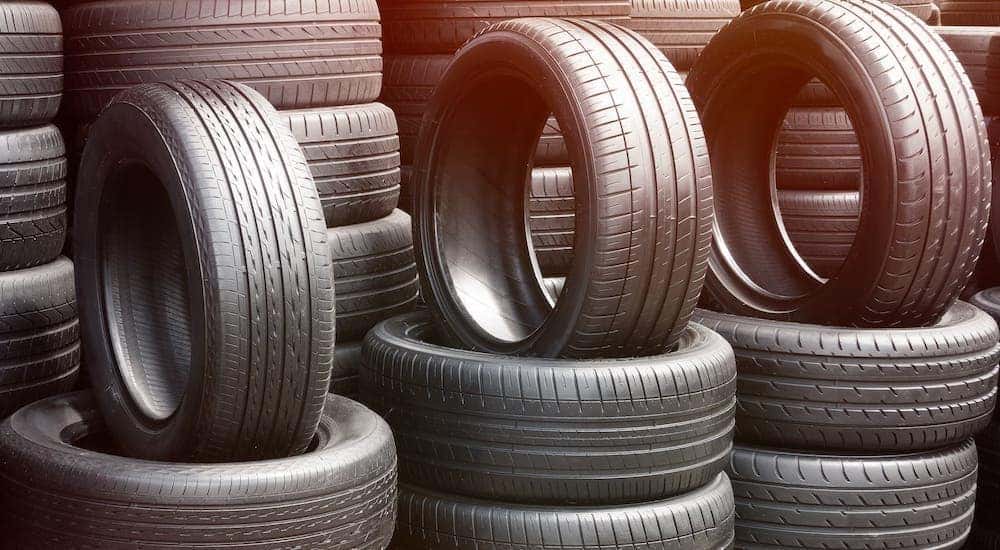Trustworthy Tire Shop Morris: Your Location for Top Quality Tires and Solutions
Trustworthy Tire Shop Morris: Your Location for Top Quality Tires and Solutions
Blog Article
Tire Solution: The Effect of Weather Problems
When it concerns ensuring optimal performance and safety and security on the roadway, recognizing the effect of climate condition on tire solution is crucial. From scorching warmth to icy roads, each weather element can dramatically influence tire performance and overall driving experience. By delving into the impacts of varying weather condition conditions on tires, chauffeurs can acquire valuable understandings that may improve their lorry's performance and long life. In this conversation, we will check out the intricate relationship between climate condition and tire solution, shedding light on the relevance of weather-specific tire upkeep methods and considerations.
Warm and Tire Efficiency
When revealed to high temperatures, tires experience adjustments in efficiency that can dramatically impact lorry safety and security and handling. The heat generated from long term driving or heat problems creates the tire rubber to soften, resulting in lowered tread life and increased wear. As the rubber becomes softer, the tire's hold on the roadway reduces, impacting stopping distances and general traction. In extreme instances, too much heat can even create tire blowouts, presenting an extreme safety risk to the car and its residents.
Additionally, heats can increase the process of tire aging, creating the rubber to weaken faster. This can result in cracks, protrudes, and various other kinds of damages that endanger the architectural integrity of the tire. To alleviate the results of warmth on tire efficiency, chauffeurs need to regularly inspect their tire stress, revolve tires to ensure even use, and check for any type of indications of damages. Furthermore, using tires particularly created to hold up against high temperatures can aid preserve ideal efficiency and security when traveling.
Cold Weather Condition Results
Cold weather conditions can have a considerable impact on tire efficiency and safety and security. In cool climate, tires might additionally shed air pressure much more swiftly, which can influence dealing with and fuel effectiveness.
To alleviate the impacts of winter on tires, it is vital to consistently inspect tire stress and inflate them to the producer's advised levels. Utilizing wintertime or all-season tires created for chilly weather conditions can likewise boost traction and grip on icy or snowy roads - tires morris il. Correct tire upkeep, including normal assessments for wear and damage, comes to be much more essential throughout cooler months to guarantee optimum efficiency and security
Rainy Conditions Impact
Tires with worn-out footsteps are more vulnerable to hydroplaning, where a layer of water builds up in between the road and the tire surface area, leading to loss of traction. To combat this, chauffeurs ought to consistently evaluate their tires for adequate tread deepness and take into consideration spending in tires particularly made for damp problems.

Snow and Tire Safety
When driving in snowy problems, having the right tires can make a substantial distinction in safety and security and performance. Winter tires are designed with special rubber substances and walk patterns to provide far better traction on snow and ice compared to all-season tires.
In addition to making use of winter months tires, it is important to ensure they are effectively inflated. Cold weather can cause tire pressure to drop, influencing traction and handling (discount tires morris il). Frequently inspecting and maintaining the right tire stress is important for optimal performance in snowy problems

Weather-Related Tire Upkeep
When confronted with various weather, appropriate tire maintenance comes to be a vital element of car safety and security and performance. Weather-related tire upkeep includes a variety of techniques focused on making certain ideal tire function and longevity in different climate scenarios. One vital element of weather-related tire maintenance is tire stress regulation. Varying temperature levels can cause tire pressure to vary, influencing traction and fuel efficiency. Frequently inspecting and adjusting tire stress according to manufacturer referrals is necessary for safe driving in changing climate conditions. In addition, tire step depth plays a considerable role in managing various weather condition components. Tires with adequate step depth supply better grip on wet or icy roadways, decreasing the danger of skidding or hydroplaning. When walk wear gets to a specific depth is important for preserving traction and stability in unfavorable weather, inspecting tire step on a regular basis and replacing tires. By prioritizing weather-related tire maintenance, motorists can boost security, boost automobile efficiency, and extend the lifespan of their tires.
Conclusion
In final thought, weather have a considerable effect on tire efficiency and safety. From warmth influencing tire pressure and wear to winter lowering grip, it is essential to consider the weather condition when preserving and using tires. Stormy conditions can decrease hold and lead to hydroplaning, while snow can boost the threat of crashes if tires are not correctly geared up. Weather-related tire maintenance is crucial in guaranteeing optimum efficiency and safety when traveling.
In this discussion, we will discover the intricate relationship between weather condition problems and tire service, dropping light on the relevance of weather-specific tire upkeep techniques and factors to consider.

Report this page